Stay HYDRAted! 3 Shows to See in Hydra
I've been to Hydra for the first time. Between beach and brunch, I quenched my artistic thirst with some exhibitions.
A Vibe Assessment
Hydra is a surreal place. It’s a bit over an hour away by ferry from busy Athens, but it feels like an entirely different world. No cars, just walking, boats, and mules. Jeff Koon’s (Baby Boomer, US-American) golden sun greets visitors like a lighthouse or an artistic Statue of Liberty. There couldn’t have been a better fitting symbol for this place.
Hydra turns into a hub every June for three days. The Athenian DESTE Foundation does a show there every year, bringing in artsy people from all over — especially folks coming over after the Art Basel craze. The current DESTE show deserves its own review, stay tuned.
Although many artists used to live here and cash-abundant high society flocks to this island for a couple of days every June, Hydra is surprisingly low-key. No chain stores, no designer boutiques. Local tavernas instead of international franchises. Sure, there’s the yachts and understated status symbols like Hermès sandals or a basket-woven Céline beach bag, but it still feels off the grid. Partly because communication works through posters. This is what it must have been like in pre-Internet times, when you got up to date on events via street ads. I even got an Athens show invite printed on a café napkin, which is the coolest thing ever.
It also feels low-key because of the many local artists and creatives from around Athens — the local scene is integrated into the fabric, not shut out: Greek and international artists exhibit together in abandoned buildings and schools, a local bakery does the catering for an artist talk at the old cinema. The Old Carpet Factory was turned into an art residency with film screenings and music. The place isn’t being gentrified but revived.
This isn’t another sales event. It’s not another “networking” opportunity. I got to form genuine connections instead. It’s so easy to spark a conversation with no pressure. This would never happen in Germany, a friend said after we met new people at the Opening Party. Another thing is the hilarious forced intimacy: You might have met a gallerist in Athens in an exhibition setting, and here you both are, in bathing suits and sunburnt, half-awkward and half-joyful about the unexpected encounter.
I dearly love Athens and its people. Nowhere else have I met people on one day and felt like we know each other for years the next day. And there I was at a bar at 2 am, laying Tarot cards with this newfound community, chit-chatting and laughing underneath the brightest stars I’ve seen on a night sky in a while, living a life I couldn’t have imagined a couple of years ago. Now, I’m back in Venice with gentle memories, so let me tell you about the shows I saw.
Mermaids’ tales
It’s a compact group show on the way to the DESTE location. The title is very spot on for the vibe on Hydra. According to the statement on IG, the show “humorously challenges the idealization of femininity and the myth of the perfect muse.”
Victoria Kosheleva’s (Millennial, Russian) paintings picked up the theme most prominently. Little Mermaid (2025) is very much golden hour photoshoot if mermaids existed and knew how to use a digital Kodak. This one and Liquid Songs of the Silent Worlds (2025) both feature mermaids, and I don’t really see how they’re being ironic about the whole idealization of femininity and the perfect muse idea. They very much look pretty in a non-derogatory way. But in Liquid Songs of the Silent Worlds, Victoria summoned some Belkis Ayón (1967-99, Cuban) vibes with those sharp eyes.
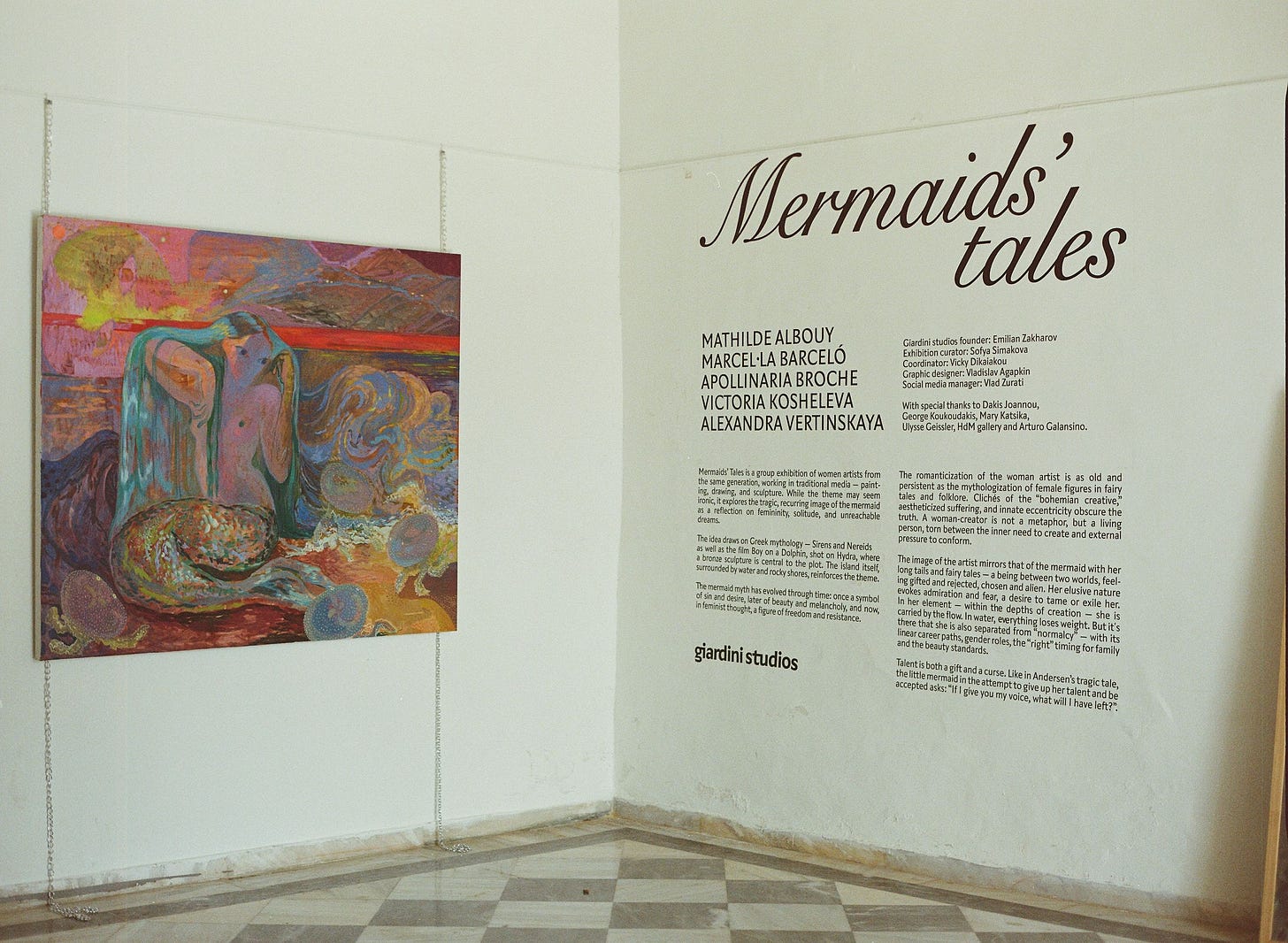
I Chrissy Teigened at Marcella Barceló’s (Millennial, Spanish) works and Chrissy Teigened even harder at Alexandra Vertinskaya’s (Gen X, Russian) acrylic on paper work From The Sea (2025). I don’t even wanna elaborate, let’s just not talk about that… I did like Apollinaria Broche’s (Millennial, Russian) Tension and Attraction (2025), though, which is a delicate white bronze sculpture. It looks like two plants swinging in the wind, or algae moving underwater. They’re connected via a string of imperfectly shaped pearls. This looks like an aesthetic version of that Two people sharing one braincell meme.
I gasped when I saw the works of Mathilde Albuoy (Gen Z, French). Three sculptures that look like massively enlarged hair pins hang on the wall. They’re made of poplar wood covered in beeswax, bringing out a glossy dark brown. The pieces are titled The Lover (Seducing), The Master, and The Dreamer (Exaltée) (all 2024). Mathilde combines swung lines with sharpness. Did you know that there was a period when women were banned from wearing hat and hairpins because they’d use them to protect themselves against harassment? They are soooo Art Nouveau coded, and my Day Ones know that I’m always down bad for an Art Nouveau reference. And that period of banned hair pins coincidentally falls into the 1910s, the era of Art Nouveau [loud murmurs in the crowd]…

Mermaids’ tales, exhibition duration not specified, @giardini.studios
Lithos/Lethe (Stone/Oblivion)
Artist and curator Dimitrios Antonitsis (Gen X, Greek) established Hydra School Projects in 1999, bringing yearly exhibitions to the island. This group show is located in a school building. We even accidentally walked into a teacher’s meeting or something of that sort before we were kindly directed to the right spot. Marble slabs are positioned on the stairs of an amphitheater. Their color merges into their environment. I didn’t even notice them at first. I also didn’t acknowledge them as art right away because marble casually lies around everywhere on Hydra like it’s trash.
Dimitrios formed these pieces into basins inspired by those of ancient Greece. I remember seeing an 18th-century marble millstone for olive oil at one of the historical sites there. Dimitrios sculpted the Greek words Lithos and Lethe into the surface, which mean Stone and Oblivion. He didn’t go for a monumental font. Instead, he chose cursive handwriting, which makes the words look like illegal graffiti, like the hidden message of an anonymous stonemason hoping to be remembered one day.
The show fills three school rooms. Forget the works, I wanna talk about the curation: They really go with the school bit all the way: The kids’ sketches and doodles on the chalkboard are preserved (which lowkey were sometimes more interesting than the actual art). Matsuo Bashō’s (Edo Period, Japanese) 1689 haiku Oh, tranquility! Penetrating the very rock, A cicada’s voice looks like it was shakily written on that chalkboard by an anxious student. The nonchalant OK in the corner next to it is hilarious. The wall labels are name stickers meant for school books. The artists’ names are written in similarly awkward school kid handwriting. Even the exhibition booklet is designed as a homework book. That is one of the most original approaches I’ve seen in a while.
Felicia Reed’s (Millennial, USA) assembled marble pieces are presented on school desks. With metal pieces and wallpaper-like textures on top, they look like they were meant to be everyday objects. One piece is very much on theme as a marble document binder.
Konrad Żukowski (Millennial, Polish) is very Ernst Ludwig Kirchner (1880-1938, German) if he summered in Greece. No, cause that’s literally it. There’s not much more going on stylistically. It’s like you asked ChatGPT to make Ernie-styled paintings of Hydra. The one diptych where two guys pee into the water and their pee looks like lightning is unhinged, though, and I respect that. Billy Sullivan’s (Baby Boomer, US-American) drawings of friends and acquaintances on Hydra vacation give me a vibe between Andy Warhol’s (1928-1987, US-American) high society mingling and David Hockney’s (Silent Generation, British) swaggy summer visuals. Angela Tisner (Millennial, Spanish) apparently had a sound work1 there, but I didn’t see it unfortunately.
The show also includes big names like Jannis Kounelis (1936-2017, Greek) and Brice Marden (1938-2023, US-American), who both used to live on Hydra. Ngl, I couldn’t care less about Jannis’s pieces here, but Brice is represented with his final three marble pieces from 2022, which is a big deal. It also connects to the abundance of marble on this island. Brice added a little something with oil and graphite to the marbles’ natural texture, barely leaving any noticeable traces. They could be easily mistaken for wear and tear.
Given that this show was supported by Gagosian (in whatever capacity), it’s such a missed opportunity that they didn’t include any Oscar Murillo (Millennial, Columbian) works. He’s currently showing at Gagosian’s Athens location, one body of work is a series where Oscar sent canvas pieces to schools all around the world and reacted to the kids’ doodles on canvas with paint. This would have been great here. I grade this show with a B-.
Hydra School Projects, until September 7, 2025, @hydraschoolprojects
Better Views
One village further in Vlychos, Louis Jacquot (Millennial, French) and Kyvèli Zoi turn an unfinished house into an exhibition site… AND THEY WERE ROOMMATES! This rough space with chunky mortar and visible bricks is unexpectedly hospitable. Bare with some light fabric swaying in the breeze, it’s just like the ideal clothing condition for this hot weather.
Kyvèli (Millennial, Greek) occupies the first floor with her delicate mini-paintings. The passepartouts are broader than the actual pictures, featuring mostly interior settings, with and without people. Her style is bold and carefree, childlike in the most positive sense. I have to get really close to see the visuals: Bedrooms, people in a museum looking at a Cycladic sculpture, one person reading an imaginary manifesto-like newspaper edition of The Sometimes 2025. Kyvèli separated a couple sleeping in bed via the passepartout, giving each person their own space to rest.
In one piece, space is surreally distorted: A head is peeking out as if trying to look at what’s outside of the painting and the passepartout. A green and purple checkered floor takes up space behind. A glowing lamp is almost dangling at floor level, or my perspective is just off. But the door frame in the back is definitely not sized for a human — A red boot peeking out from the left suggests a different scale. There’s several painting-within-a-painting situations here. I wonder how she’s able to fit so many textures in there. These paintings feel almost claustrophobic in contrast to the generous building. Both the paintings and the space mirror the potential of what this building could become.
Louis’ mirror works take up the second floor. They are paired and grouped in rows as diptychs and polyptychs. Louis draws abstract and figural visuals with silvery plastic onto the surfaces that looks like gooey fluid leed.
According to the work titles, those are portraits of people, but it’s hard to decode them with all the light and reflections of their surroundings. I did recognize a face in one, doubled by the reflection and colorized by the blue sky behind. Seeing this during golden hour was incredible. Sometimes, Louis puts up the backside of those mirrors, playing with their blue-gray gradients. These color panels, in turn, are heavily Brice Marden (1938-2023, US-American) coded. It’s a lovely take on how art is never just this thing separate from everything else but exists — summoning Kamala Harris for this one — in the context of everything of all in which you live and what came before you.
KYAN HYDRA, until June 30, 2025 @kyanathens
Stay tuned for my review of the most important show of Hydra next week!
Thanks for reading! Make sure you subscribe and like this post. And if you wanna share any thoughts, feel free to reach out!
See you soon!!!
Jennifer
The Gen Z Art Critic
In an earlier version, I mistakenly stated it was a video work


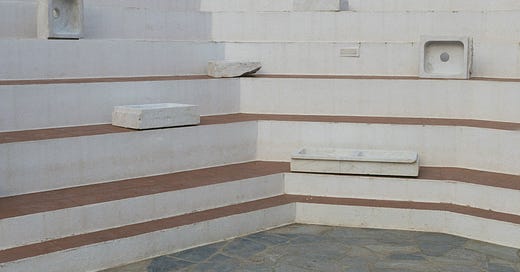



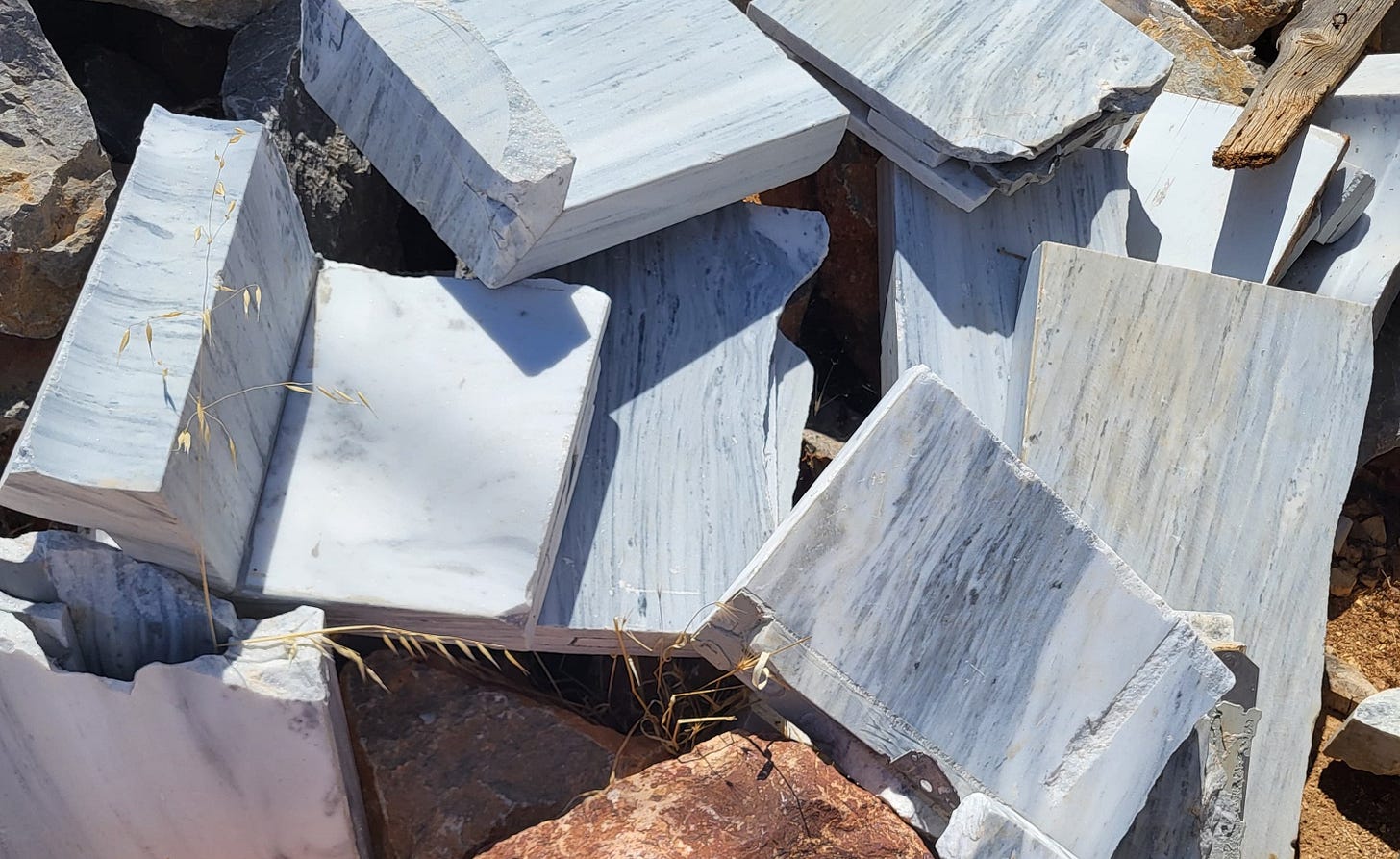

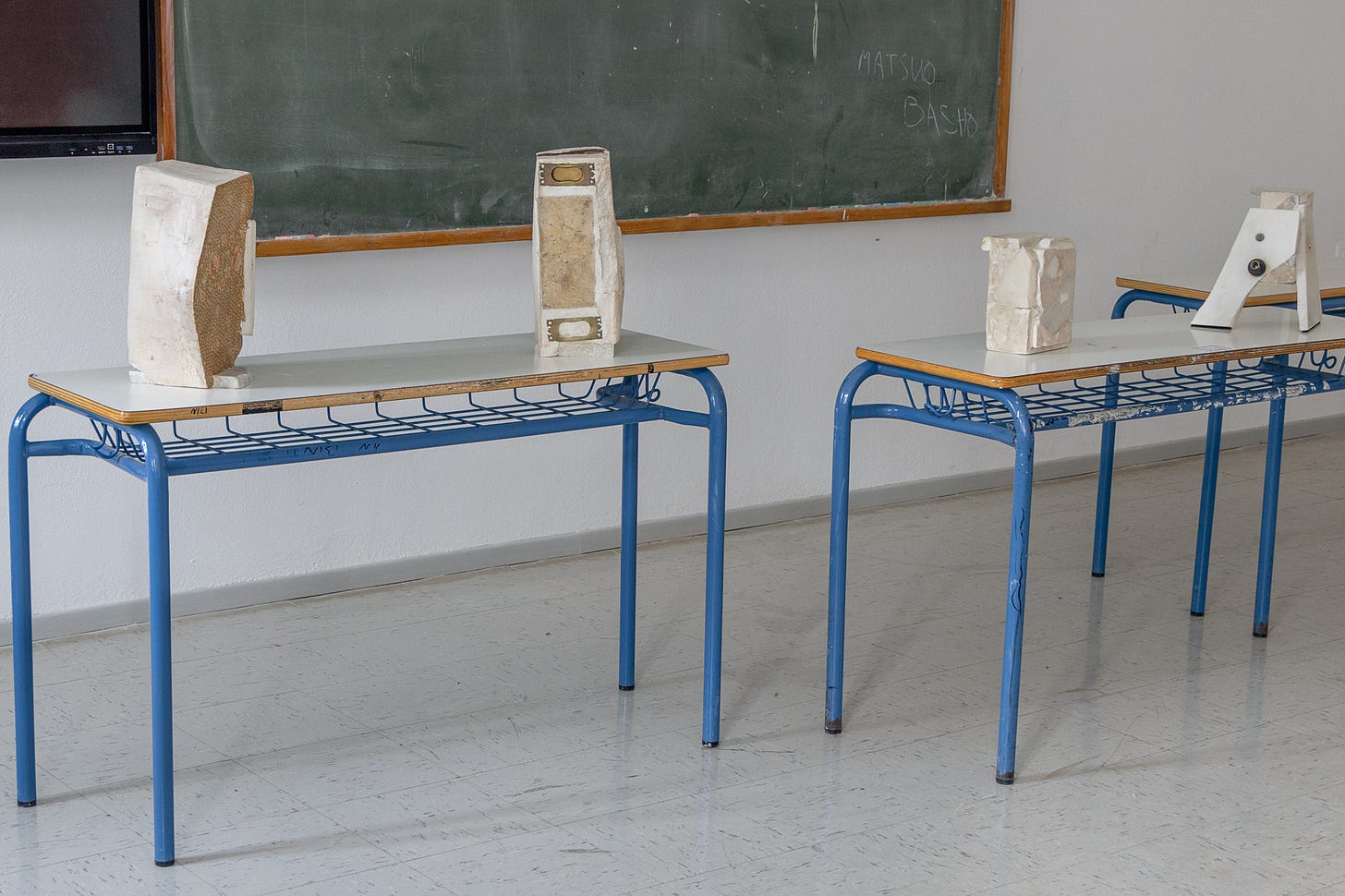
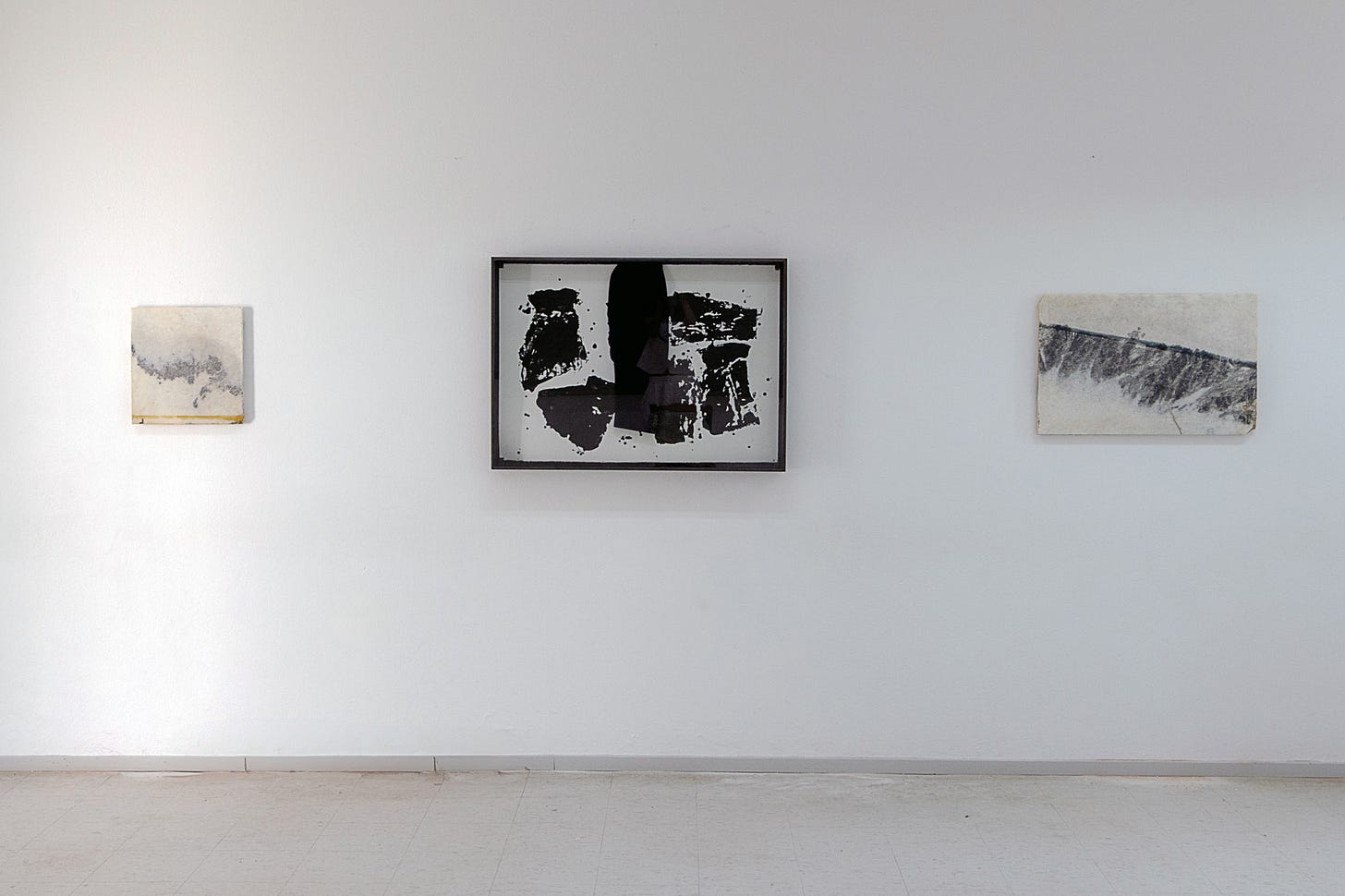


Thanks for the article. We are going to easter every year. Personaly I prefer easter and less art but green 💫💯💫